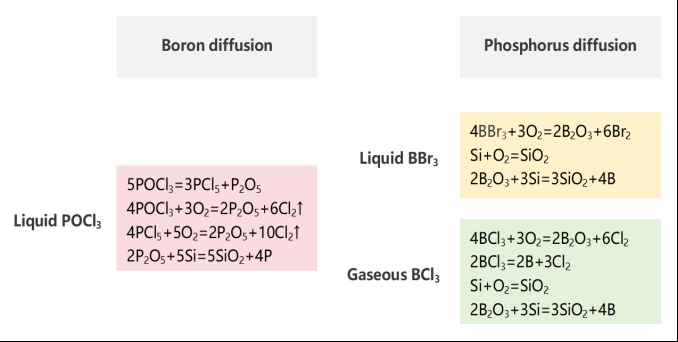As the mainstream solar energy core conversion technology in the market today, the performance optimization of crystalline silicon solar cells depends on the precise design of the structure and the monitoring of the manufacturing process, among which the PN junction doping control is particularly critical. This aspect directly affects the photoelectric conversion efficiency and long-term stability of solar cells, and is an indispensable part of improving the overall performance.
Crystalline silicon solar cell manufacturing uses high-temperature chemical thermal diffusion to achieve doping PN junctions. Boron diffusion and phosphorus diffusion are two different doping technologies. The choice depends on the design requirements. For example, phosphorus diffusion is used to form the emitter in the production of N-type silicon-based cells, and boron diffusion is used to form the emitter in the production of P-type silicon-based cells.

Doping rate and time are mainly used to control the depth and doping concentration of PN junction in solar cell manufacturing. The process control determines the separation efficiency and diffusion length of carriers inside the silicon wafer. Accurate control of the diffusion process is one of the keys to improving cell performance.
Doping time that is too short or too long will cause uneven distribution of dopants in the film, and the sheet resistance will vary in different areas. The sheet resistance value is mainly a comprehensive representation of surface concentration and junction depth. Its influence on the cell parameters mainly has the following three points:
1. The depth of the diffused PN junction directly affects its absorption of short-wave light. Therefore, within a certain range, the shallower the diffused PN junction (the higher the sheet resistance), the higher the current value;
2. The doping concentration of the diffused phosphorus element affects the conductivity of the N-type silicon part to a certain extent. Therefore, the higher the doping concentration (the smaller the sheet resistance), the higher the fill factor;
3. Within a certain range, the open circuit voltage will increase as the diffusion concentration increases.

In-line Four Point Probe Tester test data and heat map comparison
By measuring the sheet resistance of silicon wafers, important information about the uniformity and concentration of silicon wafer doping can be obtained. The value of the sheet resistance directly affects the lateral distribution of current and the vertical collection effect, which is closely related to the overall performance of solar cells.